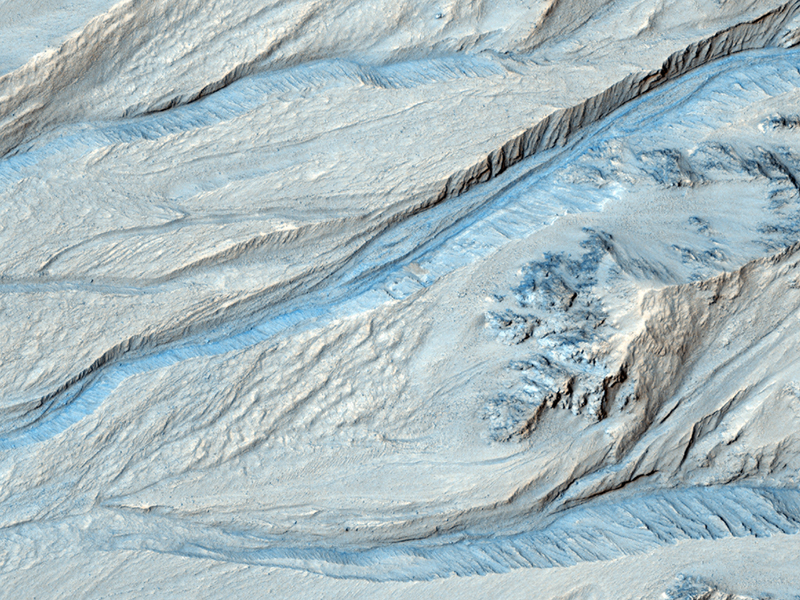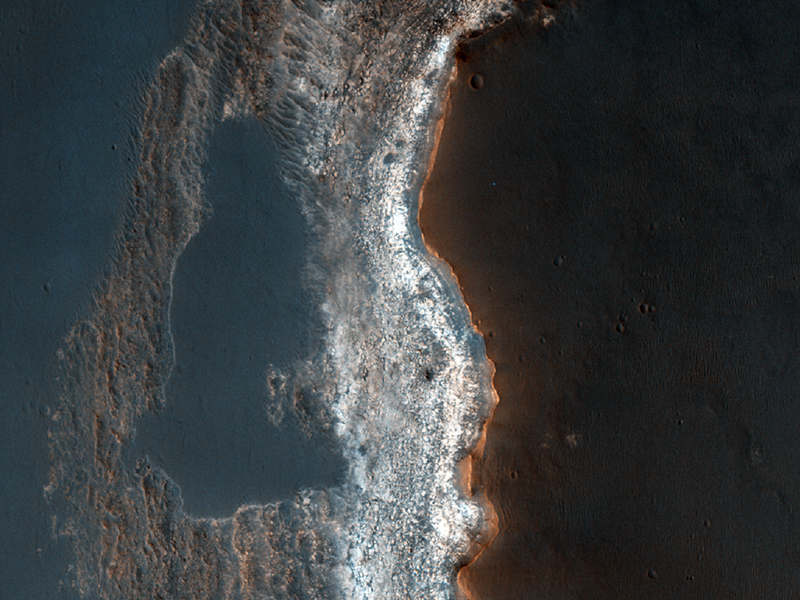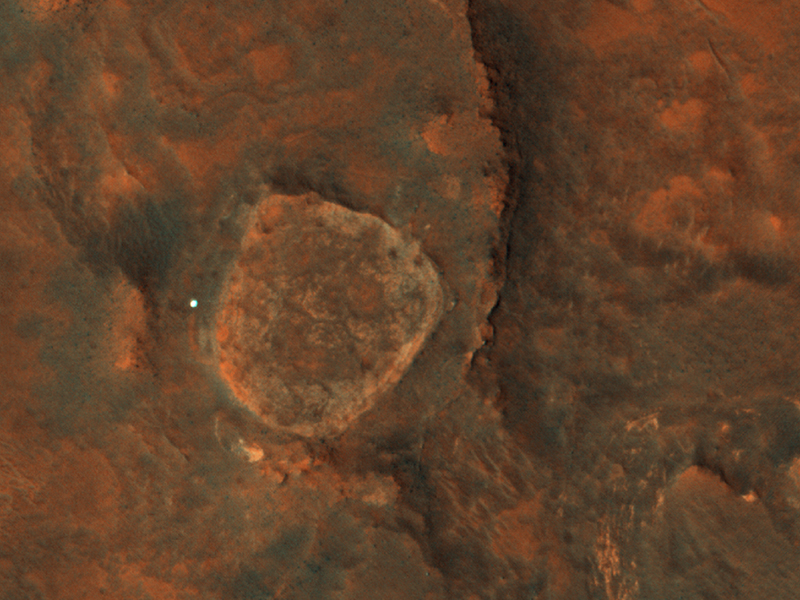HiRISE Science Team wrote:Fans on Lobes in Argyre Region (ESP_020892_1275)
Previous images show fans on some lobate features but not on others. One of the additional reasons to image this area is to to monitor the defrosting process. At the resolution of HiRISE, we are able to see surface and fan details, like in this subimage.
The Argyre Region is a large impact basin that also contains other geologic features, such as polygonal impact craters. The basin is surrounded by heavily cratered highlands.
HiRISE Science Team wrote:Well-Preserved Gullied Impact Crater (ESP_021676_1430)
This observation shows us pristine gullies, some with bright deposits, and perhaps very recent.
In addition, there is exposed bedrock, which at HiRISE resolution, we can pick out fine details. Observations like this can also help gully modeling.
HiRISE Science Team wrote:Syrtis Major Region Scarp (ESP_021757_1975)
Light-Toned Sedimentary Rocks Exposed
This image covers a thick sequence of stratified rocks that are visible in (Context Camera) CTX images.
These rocks look similar to those in other clay-bearing terrains on Mars and may represent a once extensive deposit that covered the region. HiRISE resolution can be used to the thin beds and to create a digital terrain model.
HiRISE color can aid to determine the composition of these layers, along with this stereo pair to measure bed thicknesses.
Credit: NASA/JPL/University of ArizonaAlfred McEwen and Mike Mellon wrote:Spirit, Spirit, Shining Bright (ESP_021925_1650)
This observation catches the NASA Mars Exploration Rover Spirit gleaming in the sun beside Home Plate inside Gusev Crater. It also catches a dust devil in action.
We were surprised to see that the Spirit rover itself is the brightest spot in the image, unlike dozens of previous images of both rovers. Analysis of the illumination and viewing geometry and the tilt of the rover indicate that, by accident, we imaged it near the specular point for the flat solar panels. The specular point is where the illumination angle is the same as the viewing angle, and the vectors are aligned.
Ground-based measurements prior to launch showed that the specular reflection could be seen even when there is a thin dust cover over the panels. This result does show that the solar panels are not covered by an optically thick layer of dust (i.e., too thick for any light to pass through it). Spirit last communicated on 22 March 2010.
...
<< Previous HiRISE thread




